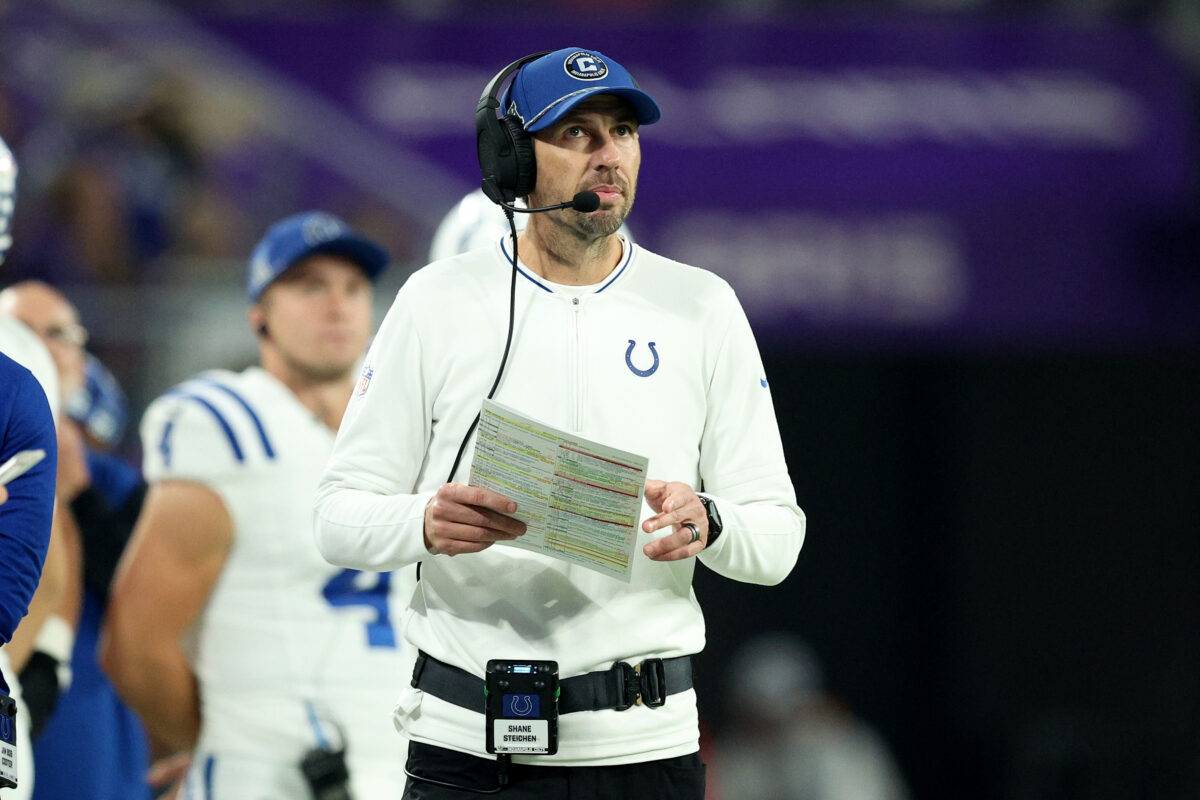On Sunday night football against the Minnesota Vikings, the Indianapolis Colts dropped their second straight game and are again below the .500 mark at 4-5 on the year.
It was a game where the defense held on as long as they could against a talented Vikings offense, who put up yards but struggled to turn that production into points for much of the game. However, a lack-luster performance by the Indianapolis offense was far too much to overcome.
Now that we’ve had time to look back and digest what we saw, let’s take a look at the Colts’ performance with the good, the bad, and the ugly of it all.
The Good
Takeaways: A large factor in the Colts’ ability to keep points off the board was that the defense was able to generate three takeaways. One was a forced fumble that was returned for a touchdown. Another led to a field goal, and the other came in the end zone, taking at least three points away from Minnesota.
DeForest Buckner: For the second straight game following his return, Buckner made a massive impact. The Colts leaned heavily on him in this one because when he wasn’t on the field, there was a noticeable dropoff in the level of play along the front. Buckner’s six pressures were the fifth-most in Week 9 among interior defenders and he ranked eighth in PFF’s pass-rush productivity metric.
Kenny Moore: As he does, Moore did a little bit of everything for the Colts. He scooped up the forced fumble by Grover Stewart and returned it for a touchdown. Moore also made six solo tackles and while he allowed five receptions, he held the Minnesota pass-catchers to a grand total of 30 yards.
The Bad
Penalties: In this game, the Colts were penalized seven times for 50 yards compared to just three penalties called on Minnesota. On the offensive side of the ball, these flags put a struggling passing game behind the sticks, which then all but ended the drive.
Time of possession: The Vikings were able to sustain some drives, moving the ball and totaling 415 yards of offense. On the flip side, the Colts had five possessions with fewer than five plays and struggled to stay on the field. This resulted in Minnesota holding the ball for 13 more minutes and running 22 additional plays. A negative trickle-down effect of that the defense can wear down and it gave more opportunities to an explosive Minnesota passing game.
The Ugly
The offense: The obvious choice, right? After benching Anthony Richardson in favor of Joe Flacco, the Colts put together what was statistically their worst performance of the season in several key categories.
— 6 points, their lowest of the year
— 0 red zone drives, their lowest of the year
— 13 first downs, their lowest of the year
— 227 yards of offense, their lowest of the year
— -0.35 EPA/play, their lowest of the year
The run game couldn’t get anything going with Jonathan Taylor totaling 48 yards on 13 carries. While Flacco’s presence was supposed to provide stability to the passing game, it does take away from the Indianapolis run game, with defenses able to defend Taylor more aggressively when not having to worry about the quarterback with the ball.
With the run game unable to get going, it put the Colts in numerous second and third-and-long situations. These predictable passing downs give the advantage to the defensive side of the football, both from a coverage and pass-rush standpoint where the front can pin its ears back.
Further complicating things was that the Vikings’ defense under defensive coordinator Brian Flores does an excellent job of disguising pressures and coverages causing chaos and confusion for the quarterback. The result was Flacco and the passing game looking disjointed, while Shane Steichen had no answers.
All eyes across the NFL turned to Indianapolis a week ago when they benched Richardson and then in the Colts’ first primetime game, the offense had its worst performance of the season.
